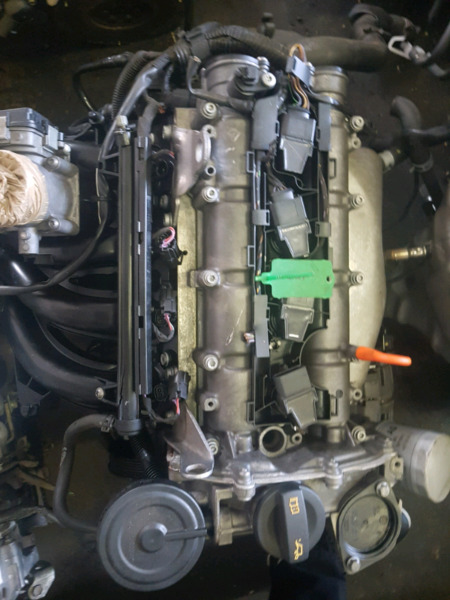The Duty of a Clp Engine in Revolutionizing Engine Efficiency and Sustainability
The development of CLP engine technology presents a pivotal moment in the automotive industry, where performance and sustainability converge in unprecedented means. By maximizing combustion procedures and allowing for vibrant changes in compression ratios, these engines not only promise improved fuel performance and lowered emissions but likewise difficulty traditional design standards.
Understanding CLP Engine Modern Technology
As the vehicle sector continuously seeks cutting-edge remedies to boost performance and performance, understanding CLP engine technology ends up being critical. The term CLP means Compression-Low Stress, an innovative engine design that concentrates on optimizing burning processes and minimizing exhausts. This technology operates by preserving a low-pressure atmosphere within the combustion chamber, which assists in a more total fuel melt and lessens unburned hydrocarbons.
One of the essential functions of CLP engine modern technology is its capability to readjust the compression ratio dynamically. This flexibility permits the engine to operate efficiently throughout numerous driving problems, boosting gas economic situation while at the same time enhancing power result. In addition, CLP engines utilize advanced materials and layout concepts to reduce weight and thermal losses, even more adding to general performance.
Moreover, the combination of digital control systems plays an important function in taking care of the engine's efficiency criteria. These systems allow real-time modifications to ignition timing and gas injection, maximizing combustion for both power and performance. By understanding CLP engine innovation, stakeholders in the auto market can better appreciate its potential in driving the future of engine design, performance, and sustainability.
Performance Enhancements Offered
CLP engine innovation provides significant efficiency improvements that set it apart from standard engine layouts. One of the primary advantages of CLP engines is their capability to run efficiently across a broader range of speeds and tons. This versatility equates into enhanced torque distribution and acceleration, giving a more receptive driving experience.
Furthermore, the advanced burning process utilized in CLP engines maximizes fuel-air blending, leading to greater thermal effectiveness. This improvement not only maximizes power outcome yet likewise minimizes power loss, causing an engine that performs better under numerous conditions.
In addition, the modular architecture of CLP engines permits easier assimilation with hybrid systems, amplifying their performance capacity - clp engine. This flexibility makes it possible for producers to design vehicles that cater to customer requirements without compromising dexterity or power
The accuracy engineering associated with CLP modern technology additionally adds to lower friction and wear, improving engine longevity and reducing the regularity of upkeep. Generally, these efficiency enhancements placement CLP engines as a leading choice in the pursuit of high-performance, reliable, and versatile engine options.
Ecological Benefits of CLP Engines
One of the most engaging advantages of CLP engines exists in their ecological advantages, which are progressively critical in today's automotive landscape. These engines are developed to maximize fuel effectiveness, significantly reducing carbon exhausts contrasted to traditional combustion engines. By using advanced combustion methods and cutting-edge products, CLP engines advertise cleaner exhaust outcomes, adding to boosted air quality.
Furthermore, the decrease in gas usage not just leads to lower greenhouse gas emissions yet also conserves useful natural sources. As nonrenewable fuel source gets diminish, the shift in the direction of CLP modern technology stands for a calculated relocation towards sustainability. The engines are usually suitable with different fuels, even more boosting their environmental appeal and enabling a varied energy profile.
In addition, the light-weight style of CLP engines helps reduce car weight, which in turn lowers the energy required for propulsion. This causes reduced functional energy consumption and a lessened environmental footprint. In recap, CLP engines stand at the forefront of efforts to minimize climate modification and advertise lasting practices in the vehicle here are the findings sector, personifying a future where efficiency and ecological obligation are not equally unique.
Comparison With Standard Engines
While standard engines have lengthy controlled the auto market, the introduction of CLP innovation provides a considerable shift in efficiency and efficiency. Traditional inner burning engines mainly depend on fuel burning, which not only restricts thermal performance but likewise adds to greater exhausts. On the other hand, CLP engines utilize innovative thermal monitoring and a special burning process, enhancing gas efficiency and dramatically reducing greenhouse gas emissions.
Additionally, conventional engines operate on set power contours, which can prevent efficiency in varying driving conditions. CLP engines, however, are developed to adapt their performance dynamically, offering ideal power delivery based on real-time demands. This versatility brings about enhanced acceleration, responsiveness, and overall driving experience.
Upkeep also varies substantially; traditional engines frequently require constant oil adjustments and component replacements because of deterioration. clp engine. CLP engines, with less relocating their website parts, promise reduced upkeep demands and longer functional life-spans

Future Leads and Innovations
As the vehicle landscape evolves, the future of engine technology is significantly focused on developments that enhance efficiency and sustainability. The Clp engine, with its distinct style and functional effectiveness, is positioned to play a crucial duty in this improvement. Future developments might entail developments in materials science, allowing the construction of lighter and extra long lasting elements, thus reducing general automobile weight and enhancing fuel efficiency.
Furthermore, the integration of expert system and artificial intelligence right into engine management systems is anticipated to enhance efficiency dynamically, allowing for real-time changes based on driving conditions. These technologies can further lessen emissions and enhance energy utilization.
In addition, research right into different gas, including hydrogen and biofuels, offers interesting opportunities for Clp engines, lining up efficiency with eco-friendly initiatives. clp engine. As regulative frameworks come to be stricter, the fostering of such innovations will certainly be vital in achieving sustainability objectives without endangering power
Verdict
